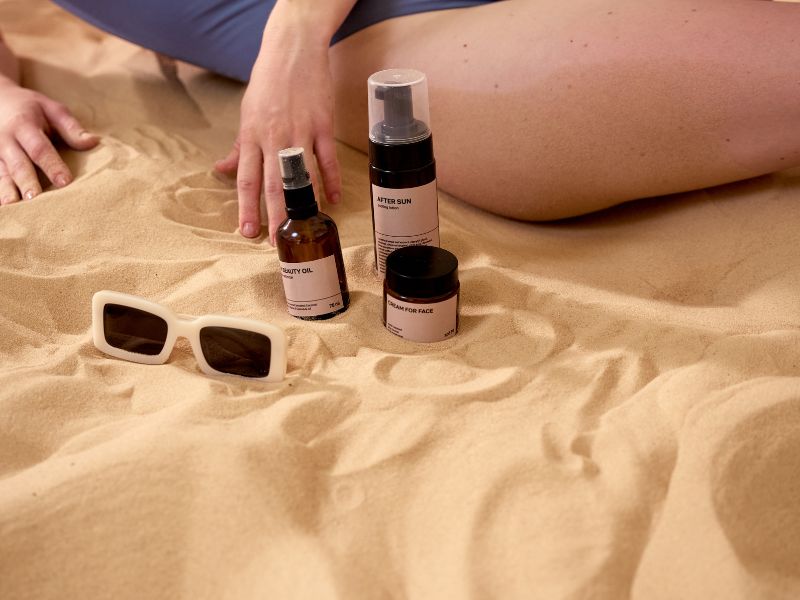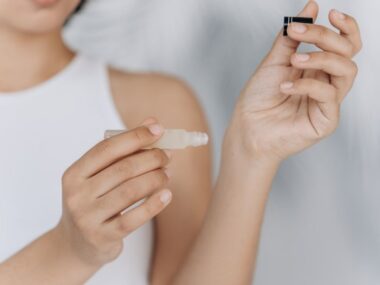As more people turn to natural skincare solutions, shea butter has gained attention as a potential alternative to conventional sunscreen. While this rich, creamy substance derived from the nuts of African shea trees offers numerous skin benefits, its effectiveness as sun protection requires careful examination. This comprehensive guide explores whether shea butter can truly serve as a reliable sunscreen and what you need to know before relying on it for sun protection.
Can Shea Butter Be Used As Sunscreen
Shea butter contains natural compounds that provide minimal sun protection, with studies suggesting an SPF rating between 3-6. This protection comes from its composition of fatty acids, vitamins, and antioxidants, particularly vitamin E and cinnamic acid. However, it’s crucial to understand that this level of protection falls significantly short of dermatologist-recommended SPF 30 or higher for adequate sun protection.
When comparing shea butter to conventional sunscreens:
- Commercial sunscreen SPF 30: Blocks 97% of UVB rays
- Shea butter SPF 3-6: Blocks approximately 45-75% of UVB rays
- Recommended daily minimum: SPF 30 for regular activities
- High-exposure activities: SPF 50+ recommended
The Scientific Composition of Shea Butter
Shea butter’s potential photoprotective properties stem from its rich biological composition:
- Fatty acids (40-60%):
- Oleic acid
- Stearic acid
- Linoleic acid
- Palmitic acid
- Vitamins and antioxidants:
- Vitamin A
- Vitamin E (tocopherols)
- Vitamin F
- Cinnamic acid esters
These compounds work together to provide some natural protection against UV radiation, but their primary benefits lie in skin nourishment and repair rather than sun protection.
Benefits of Shea Butter for Skin Health
While shea butter may not be sufficient as a standalone sunscreen, it offers numerous valuable skin benefits:
- Moisturization
- Deep penetration into skin layers
- Long-lasting hydration
- Reduction in transepidermal water loss
- Anti-inflammatory properties
- Soothes irritated skin
- Reduces redness
- Calms sunburned skin
- Anti-aging effects
- Promotes collagen production
- Reduces fine lines
- Improves skin elasticity
- Skin repair
- Accelerates healing
- Reduces scarring
- Supports skin barrier function
Can Shea Butter Protect Against UV Rays?
While shea butter does offer some level of sun protection, it is essential to understand its limitations. Research indicates that shea butter has an estimated SPF (Sun Protection Factor) of about 3 to 4, which is relatively low compared to commercial sunscreens that often have SPF values of 30 or higher
Mechanism of Action
Shea butter contains triterpenic alcohols and cinnamate esters, which can absorb UV radiation in the range of 250 to 300 nm. This absorption helps mitigate some harmful effects of UV rays, but it does not provide sufficient protection on its own
The Limitations of Shea Butter as Sunscreen
Despite its beneficial properties, several factors limit shea butter’s effectiveness as a primary sunscreen:
- Insufficient UV protection
- Low SPF rating
- Limited broad-spectrum coverage
- Inconsistent protection levels
- Application challenges
- Uneven coverage
- Difficult to determine an adequate amount
- Variable quality between products
- Stability issues
- Protection decreases over time
- Heat sensitivity
- Storage complications
Combining Shea Butter with Sunscreen
Rather than using shea butter alone, consider incorporating it into a comprehensive sun protection strategy:
- Layer application
- Apply broad-spectrum sunscreen first
- Follow with shea butter for added moisture
- Reapply sunscreen every 2 hours
- Enhanced benefits
- Improved skin hydration
- Additional antioxidant protection
- Better overall skin health
- Complementary protection
- Sunscreen provides UV defense
- Shea butter supports skin repair
- Combined approach for optimal results
How to Use Shea Butter Safely
To maximize the benefits while minimizing risks when using shea butter:
- Apply Generously: Use a sufficient amount of shea butter on exposed areas before applying sunscreen.
- Choose Quality Products: Opt for pure or minimally processed shea butter to avoid additives that may irritate the skin.
- Monitor Sun Exposure: Be cautious about prolonged sun exposure, especially during peak hours.
Best Practices for Sun Protection
To ensure adequate sun protection while benefiting from shea butter’s properties:
- Primary protection
- Use broad-spectrum SPF 30+ sunscreen
- Apply sufficient quantity (1 oz for full body)
- Reapply regularly
- Secondary measures
- Wear protective clothing
- Seek shade during peak hours
- Use wide-brimmed hats and sunglasses
- Skincare routine
- Include shea butter for moisture
- Apply after sun exposure
- Use as part of nighttime repair routine
Natural Alternatives and Supplements to Sunscreen
While shea butter alone isn’t sufficient for sun protection, several natural supplements can enhance your sun protection routine:
- Plant-based oils with SPF properties
- Red raspberry seed oil (SPF 28-50)
- Carrot seed oil (SPF 38-40)
- Coconut oil (SPF 4-6)
- Antioxidant-rich ingredients
- Green tea extract
- Vitamin C serums
- Niacinamide
- Protective supplements
- Astaxanthin
- Beta carotene
- Vitamin D
Limitations of a Standalone Sunscreen
Despite its benefits, relying solely on shea butter for sun protection is not advisable:
- Low SPF: With an SPF of only 3 to 4, it does not provide adequate protection against sunburn or long-term skin damage.
- Reapplication Needs: Frequent reapplication would be necessary to maintain any protective effect.
- Not Officially Recognized: Shea butter is not listed as an official UV filter in cosmetic regulations, meaning it lacks the endorsement that commercial sunscreens have
How to Incorporate Shea Butter into Your Sun Protection Routine
To maximize the benefits of both shea butter and proper sun protection:
- Morning routine
- Cleanse skin thoroughly
- Apply vitamin C serum (if using)
- Use broad-spectrum sunscreen
- Add shea butter for moisture if needed
- During sun exposure
- Reapply sunscreen every 2 hours
- Use protective clothing
- Seek shade when possible
- After-sun care
- Cleanse skin gently
- Apply pure shea butter
- Focus on hydration and repair
Conclusion
While shea butter offers valuable skin benefits and minimal sun protection, it should not be relied upon as a primary sunscreen. Its SPF rating of 3-6 falls well below the recommended minimum of SPF 30 for adequate sun protection. However, shea butter can play a valuable role in a comprehensive sun protection strategy when combined with proper broad-spectrum sunscreen and other protective measures.
For optimal skin health and sun protection:
- Use a broad-spectrum sunscreen with SPF 30 or higher as your primary sun protection
- Incorporate shea butter for its moisturizing and skin-repairing properties
- Follow sun safety guidelines, including protective clothing and seeking shade
- Consider shea butter as part of your after-sun care routine
Remember that while natural skincare ingredients like shea butter have their place in a healthy skin routine, they should complement rather than replace proven sun protection methods. Always consult with a dermatologist or healthcare provider for personalized advice on sun protection, especially if you have specific skin concerns or conditions.
By understanding the limitations and proper use of shea butter in sun protection, you can make informed decisions about your skincare routine while ensuring adequate protection from harmful UV radiation. The key is to embrace a balanced approach that combines the best of both natural skincare and proven sun protection methods for optimal skin health and safety.






